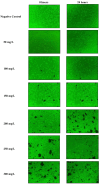Quantitative Ethnobotany of Medicinal Plants from Darjeeling District of West Bengal, India, along with Phytochemistry and Toxicity Study of Betula alnoides Buch.-Ham. ex D.Don bark
- PMID: 39771203
- PMCID: PMC11679848
- DOI: 10.3390/plants13243505
Quantitative Ethnobotany of Medicinal Plants from Darjeeling District of West Bengal, India, along with Phytochemistry and Toxicity Study of Betula alnoides Buch.-Ham. ex D.Don bark
Abstract
This study offers considerable information on plant wealth of therapeutic importance used traditionally by the residents of 11 villages under three subdivisions of Kurseong, Darjeeling Sadar, and Mirik in the Darjeeling District, West Bengal. For the acquisition of ethnomedicinal information, semi-structured interviews were conducted with 47 informants, of whom 11 persons were herbalists and 36 were knowledgeable persons. Free prior informed consent was obtained from each participant prior to the collection of field data. A total of 115 species were documented, which spread over 65 families and 104 genera. From the informants, a total of 101 monoherbal and 21 polyherbal formulations were recorded for treating 50 types of health conditions. The collected ethnobotanical data have been evaluated to measure the utilitarian significance of remedies using three quantitative tools, informant consensus factor (Fic), use value (UV), and fidelity level (FL%). A statistical analysis revealed that among 11 disease categories, the highest Fic value was estimated for the category of digestive diseases. The plant Hellenia speciosa (J.Koenig) S.R.Dutta scored the highest use value among all the recorded plant species. In the case of the FL% analysis, the highest score (97%) was observed in Betula alnoides Buch-Ham. ex D.Don, which is used for snake bites, among the recorded 115 plant species. In addition, the present study embodies the quantitative estimation of phenolics and flavonoids, along with an HPLC analysis of the B. alnoides bark to endorse this most important and underexplored plant as a potential source of therapeutically important chemical compounds. The bark extract contains significant amounts of phenolics (87.8 mg GAE/g dry tissue) and flavonoids (30.1 mg CE/g dry tissue). An HPLC analysis unveiled a captivating ensemble of six phenolic compounds, namely, chlorogenic acid, sinapic acid, caffeic acid, coumarin, p-coumaric acid, and gallic acid. Among the identified phenolics, chlorogenic acid scored the highest amount of 117.5 mg/g of dry tissue. The present study also explored the moderate cytotoxic nature of the bark extract through an in vitro cytotoxicity assay on the L929 mouse fibroblast cell line. Our study not only documents the statistically analyzed information about ethnomedicinal practices that prevailed in the rural communities of the Darjeeling District but also highlights the profound therapeutic capabilities and non-toxic nature of B. alnoides bark.
Keywords: Darjeeling Himalaya; HPLC; MTT assay; bark extract; ethnobotanical indices; ethnomedicine.
Conflict of interest statement
The authors declare no conflict of interest.
Figures








Similar articles
-
Ethnobotanical knowledge among the semi-pastoral Gujjar tribe in the high altitude (Adhwari's) of Churah subdivision, district Chamba, Western Himalaya.J Ethnobiol Ethnomed. 2019 Feb 11;15(1):10. doi: 10.1186/s13002-019-0286-3. J Ethnobiol Ethnomed. 2019. PMID: 30744678 Free PMC article.
-
Ethnobotanical study of traditionally used medicinal plants of Pauri district of Uttarakhand, India.J Ethnopharmacol. 2021 Aug 10;276:114204. doi: 10.1016/j.jep.2021.114204. Epub 2021 May 15. J Ethnopharmacol. 2021. PMID: 34000367
-
Ethnobotany and phytochemistry of plants used to treat musculoskeletal disorders among Skaw Karen, Thailand.Pharm Biol. 2024 Dec;62(1):62-104. doi: 10.1080/13880209.2023.2292261. Epub 2023 Dec 22. Pharm Biol. 2024. PMID: 38131672 Free PMC article.
-
Ethnobotanical study of Kani tribes in Thoduhills of Kerala, South India.J Ethnopharmacol. 2014 Feb 27;152(1):78-90. doi: 10.1016/j.jep.2013.12.016. Epub 2014 Jan 3. J Ethnopharmacol. 2014. PMID: 24393788
-
An ethnobotanical study of medicinal plants used by ethnic people in Parbat district of western Nepal.J Ethnopharmacol. 2015 May 13;165:103-17. doi: 10.1016/j.jep.2014.12.057. Epub 2015 Jan 5. J Ethnopharmacol. 2015. PMID: 25571849
References
-
- Khan K., Jan G., Irfan M., Jan F.G., Hamayun M., Ullah F., Bussmann R.W. Ethnoveterinary use of medicinal plants among the tribal populations of District Malakand, Khyber Pakhtunkhwa, Pakistan. Ethnobot. Res. Appl. 2023;25:1–24. doi: 10.32859/era.25.42.1-24. - DOI
-
- Adeniyi A., Asase A., Ekpe P.K., Asitoakor B.K., Adu-Gyamfi A., Avekor P.Y. Ethnobotanical study of medicinal plants from Ghana; confirmation of ethnobotanical uses, and review of biological and toxicological studies on medicinal plants used in Apra Hills Sacred Grove. J. Herb. Med. 2018;14:76–87. doi: 10.1016/j.hermed.2018.02.001. - DOI
-
- Tamang S., Singh A., Bussmann R.W., Shukla V., Nautiyal M.C. Ethno-medicinal plants of tribal people: A case study in Pakyong subdivision of East Sikkim, India. Acta. Bot. Sin. 2023;43:34–46. doi: 10.1016/j.chnaes.2021.08.013. - DOI
LinkOut - more resources
Full Text Sources

